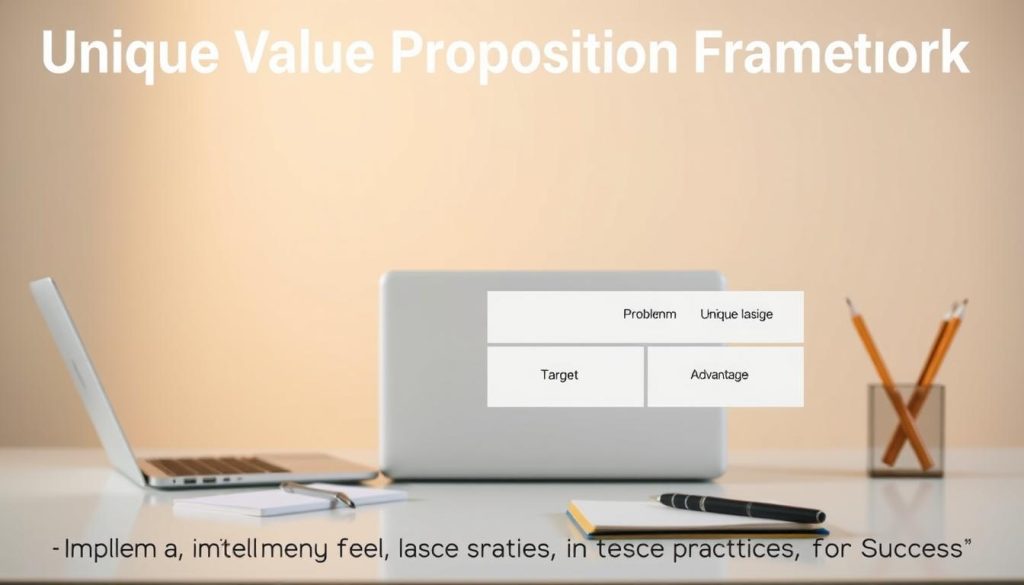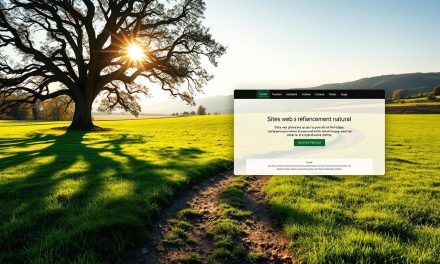Remember that moment when you first realized traditional employment no longer fit your ambitions? For many skilled professionals, that spark of independence leads to a career shift that reshapes their entire lives. Take Raechel Lambert, who left her tech job in 2018 and built a $192k freelance product marketing business in just one year – all while reclaiming her schedule.
The U.S. labor market has seen over 60 million professionals embrace self-employment, with creative industries leading this transformation. But here’s the reality many don’t discuss: lasting success requires more than talent alone. Without intentional strategies, even the most skilled individuals risk becoming part of the 43% who struggle with inconsistent income.
This guide isn’t about quick fixes. We’ll walk through proven systems used by top performers to maintain financial stability while preserving work-life harmony. You’ll learn how to stand out in crowded markets and build client relationships that sustain your business through economic shifts.
One critical lesson? Differentiation starts with understanding your unique value. Professionals who combine niche expertise with strategic self-promotion often command 20-35% higher rates than competitors. We’ll show you how to implement these principles without sacrificing personal time or creative freedom.
Table of Contents
Key Takeaways
- Creative professionals are driving record growth in independent work, prioritizing flexibility and career ownership
- Top earners use structured systems to avoid income volatility while working fewer hours
- Market differentiation becomes essential as competition intensifies across industries
- Financial planning and client management form the foundation of sustainable self-employment
- Real-world case studies reveal patterns successful freelancers use to maintain growth
Understanding the Freelance Landscape
Work environments have transformed more in the past three years than in the previous decade. Skilled professionals now prioritize autonomy over office routines, with 37% of U.S. independent workers reporting higher job satisfaction than traditional roles. This shift extends beyond individual choices – entire industries are restructuring how they engage talent.
Current Market Trends and Shifting Dynamics
Creative fields like design and content creation lead the charge. Graphic artists and writers now access global clients through digital platforms, tripling potential income streams compared to salaried positions. Remote collaboration tools erased geographic barriers, letting European professionals serve clients from Tokyo to Toronto.
The pandemic accelerated changes already in motion. Platforms like Upwork saw 50% growth in specialized service requests between 2020-2022. Businesses increasingly prefer project-based partnerships over long-term hires, creating opportunities for those ready to adapt.
Navigating Challenges in the Gig Economy
While independence offers freedom, 68% of self-employed people report income fluctuations as their top stressor. Unlike traditional roles, freelancers manage:
- Healthcare costs without employer subsidies
- Client acquisition during economic downturns
- Tax systems designed for stable incomes
Building sustainable work models requires balancing multiple priorities. Successful professionals develop hybrid approaches – combining platform gigs with retainer contracts. This strategy creates financial cushions while maintaining creative control.
One Paris-based illustrator shares: « Diversifying clients across industries helped me survive market shifts that sank larger agencies. » Such adaptability proves crucial in today’s fast-changing business landscape.
Implementing freelance best practices for Success

Standing out in today’s competitive market demands more than technical skills. Professionals who thrive combine specialized expertise with strategic positioning. This approach transforms temporary gigs into lasting partnerships that fuel business growth.
Clarifying Your Unique Value Proposition
Arielle Shnaidman’s research reveals specialists earn 20-40% higher rates than generalists. Start by answering three questions: What specific problems do you solve? Which organizations need these solutions most? What measurable outcomes do you deliver?
Instead of « social media management, » position yourself as « conversion-focused strategist for eco-conscious skincare brands. » This specificity attracts ideal clients while filtering mismatched opportunities. Update your website and portfolio to reflect this focus through case studies and client testimonials.
Defining and Carving Out Your Niche
Successful professionals use data-driven methods to identify profitable markets. Analyze industry trends using tools like Google Trends or Exploding Topics. Target emerging sectors needing your expertise but lacking local specialists.
Validate demand through low-risk experiments. Offer free audits to 10 potential clients in your chosen niche. Their feedback reveals recurring pain points and willingness to pay premium rates. One Berlin-based developer used this tactic to pivot from generic web design to blockchain integration services, tripling project fees within six months.
Regularly reassess your positioning as market needs evolve. Maintain flexibility while staying rooted in core competencies. This balance allows adaptation without losing established authority in your field.
Building Financial Foundations and Securing Payments
Financial stability transforms self-employment from a hustle into a sustainable career. Unlike traditional jobs, independent professionals face irregular income patterns that demand proactive money management. Start by building reserves covering six months of expenses – this buffer lets you negotiate better terms and handle unexpected gaps.
Effective Saving and Budgeting Strategies
Divide your earnings into four accounts: taxes (25-30%), business expenses (20%), personal spending (40%), and emergency savings (10-15%). A Barcelona-based copywriter shared: « Separating funds immediately after each payment stopped tax season panic. »
Calculate hourly rates using your previous salary as a baseline. If you earned €60,000 annually, start at €60/hour. This covers healthcare, retirement contributions, and equipment costs often overlooked by new independents.
Streamlining Invoicing and Payment Terms
Clear payment terms prevent 78% of client disputes according to recent surveys. Use contracts specifying Net 15 or Net 30 deadlines. Send invoices within 24 hours of project completion using professional invoice templates that auto-calculate late fees.
Automated systems like FreshBooks or QuickBooks track unpaid invoices and send reminders. Include 5% daily penalties for late payments – clients respect deadlines more when consequences are predefined. One Lyon-based designer reduced overdue payments by 40% after implementing this structure.
Optimizing Client Communication and Defining Scope

Ever had a client approve a design concept, then request major changes days before launch? Clear communication frameworks prevent these costly misunderstandings. Start projects with discovery sessions using tools like Google Forms to capture deadlines, goals, and visual preferences upfront.
Blueprint for Successful Collaboration
Create scope documents detailing deliverables, revision limits, and payment milestones. A Berlin-based developer shares: « Including ‘kill fees’ for canceled projects saved me €8,000 last quarter. » Use templates that automatically calculate hourly rates when clients request extra tasks.
Strategic Portfolio Presentation
Curate your compelling portfolio to show problem-solving abilities, not just final products. Interactive platforms like Paste let clients click through case studies showing your process from brief to results.
| Tool | Best For | Key Feature |
|---|---|---|
| Loom | Video updates | Screen recording + facecam |
| Trello | Progress tracking | Customizable workflow boards |
| Google Forms | Client discovery | Automated data sorting |
When scope changes arise, respond: « Let’s prioritize existing tasks or adjust our agreement. » This maintains professionalism while keeping projects on track. Collect testimonials systematically using email templates that make feedback requests effortless for clients.
Leveraging Modern Tools for Enhanced Productivity
How many hours do professionals lose weekly to administrative tasks? Top performers reclaim 12-15 hours monthly through strategic tool selection – time better spent on high-impact work. Modern solutions transform chaotic workflows into streamlined systems that boost output while reducing stress.
Top Digital Tools for Time Tracking and Management
Harvest leads time management solutions with automated invoicing and project analytics. Users gain insights into profitable vs. time-draining tasks. Toggl Track offers one-click timers that sync across devices, ideal for multi-project professionals.
| Tool | Core Strength | Ideal For |
|---|---|---|
| ClickUp | Custom workflows | Complex projects |
| RescueTime | Activity analysis | Focus improvement |
| Clockify | Team tracking | Collaborative work |
Automating Tasks with Innovative Software
Zapier connects 5,000+ apps to automate repetitive actions. One Lisbon-based writer automated client onboarding: « New contracts now trigger calendar invites and invoice templates automatically. » Calendly eliminates scheduling conflicts by syncing availability across time zones.
Essential automations for independent workers:
- Expense categorization via Wave’s AI learning
- Tax estimate calculations in QuickBooks
- Proposal templates in Notion with dynamic client fields
Adopting these solutions demonstrates professionalism while freeing capacity for strategic growth. As you implement tools, remember effective freelance management balances technology with human insight. Start with one system, master it, then layer additional tools gradually.
Time Management Techniques and Avoiding Burnout
How many productive hours do you actually have each day? Independent professionals often discover their effective work capacity differs from corporate expectations. Sustainable scheduling requires aligning task types with energy patterns rather than filling calendar slots.
Energy-Based Work Allocation
Raechel Lambert’s 65-point weekly system revolutionized her productivity. Instead of counting hours, she assigns values to tasks based on mental exertion. A client call might cost 3 points, while creative work consumes 5 points per session. This method prevents overcommitment by setting a weekly cap.
| Task Type | Points | Examples |
|---|---|---|
| Administrative | 1-2 | Emails, invoicing |
| Client Meetings | 3-5 | Brainstorming sessions |
| Deep Work | 5-7 | Strategy development |
Agile Scheduling Essentials
Traditional 9-to-5 structures fail most self-employed workers. Try this approach:
- Block mornings for high-focus tasks
- Schedule calls in energy slumps (2-4 PM)
- Keep Fridays buffer-free for overflow work
Implement effective work organization by tracking your energy peaks for three weeks. Adjust task placement accordingly. One Marseille-based developer reduced overtime by 60% using this method.
Watch for burnout signals: chronic fatigue, irritability with clients, or missed deadlines. When these appear, reduce points by 20% for two weeks. Recovery time protects long-term earning capacity more than pushing through exhaustion.
Crafting Contracts, Proposals, and Negotiation Tactics
What separates sustainable partnerships from problematic engagements? The answer lies in foundational documents that align expectations while protecting both parties. Clear agreements transform uncertainty into collaborative roadmaps.
Key Elements of Effective Proposals and Contracts
Never begin work without signed contracts, regardless of urgent deadlines. A Marseille-based designer learned this when a client’s « rush project » led to six months of payment disputes. Include these essentials:
Payment terms with Net 15/30 deadlines and late penalties. Specify termination clauses requiring 30-60 days’ notice unless misconduct occurs. Short-term contracts (3-6 months) allow rate adjustments as market conditions shift.
Retainer agreements often outperform hourly billing when properly scoped. One Lyon developer increased income stability by 40% using monthly retainers with predefined work hours. Detail deliverables using visual timelines – clients appreciate seeing how their investment translates to tangible outcomes.
When negotiating, frame discussions around value exchange rather than cost. A Bordeaux copywriter secures 22% higher rates by linking fees to specific business outcomes in proposals. Digital signing tools like DocuSign streamline approvals while maintaining legal validity across borders.
FAQ
How do I protect myself from late payments?
Use platforms like PayPal Business or Wise for secure transactions. Always include payment deadlines in contracts and require deposits for large projects. For recurring clients, set up automated invoices through tools like FreshBooks.
What’s the fastest way to establish expertise in my field?
Create case studies showcasing specific challenges you’ve solved. Publish them on LinkedIn or your professional website. Collect video testimonials from satisfied clients to build social proof.
Which tools help manage overlapping deadlines?
Try ClickUp for visual project timelines or Toggl Track for time blocking. For complex workflows, Asana’s task dependencies feature prevents bottlenecks. Pair these with Google Calendar’s focus time settings.
How can I prevent scope creep without losing clients?
Use detailed service agreements outlining exact deliverables. Implement change orders for additional requests, with clear pricing adjustments. Tools like DocuSign make approval processes efficient.
What’s the best approach to pricing specialized services?
Research industry standards using platforms like Glassdoor or Pilot. For niche skills, value-based pricing often outperforms hourly rates. Always factor in software subscriptions and tax obligations.
How do I handle clients who demand 24/7 availability?
Set communication boundaries early using tools like Calendly for booking slots. Auto-responders in Gmail or Outlook can reinforce working hours. Include response time expectations in your service contract.
What legal protections should every contract include?
Mandate clauses for termination conditions, intellectual property rights, and dispute resolution. Platforms like LegalZoom offer customizable templates. Always consult a licensed attorney for high-value agreements.





